Geological Perspective
In hydrocarbon pay zones (“pays”) that have either low resistivity or a low contrast between the resistivity of the water-bearing and the hydrocarbon-bearing intervals, logging while drilling (LWD) and wireline well log responses are influenced by a variety of factors associated with the mineralogy (Figure 1), formation water resistivity (Figure 2) and microporosity, as well as the bed thickness, dip, and anisotropy.

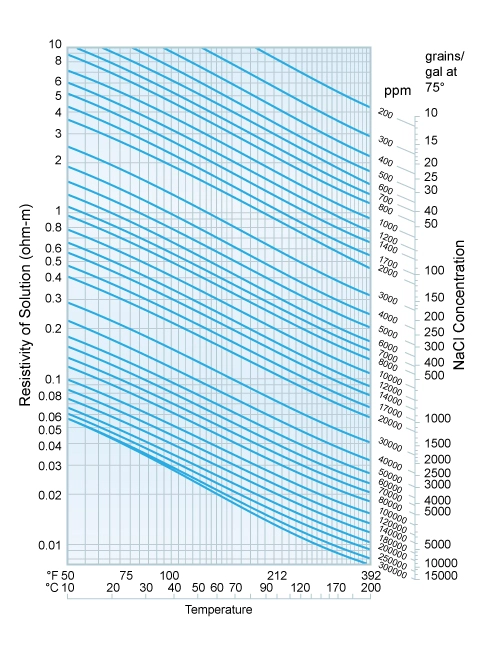
Distinguishing between Low Resistivity Pay and Low Contrast Pay
Low resistivity pay is characterized by pay zones that cause the deep resistivity logs to read from 0.5 to 5 ohm-m. This is often attributed to a combination of the shale and clay content (Figure 3 and Figure 4) and its high conductivity, the mineralogy, the microporosity, and the bed thickness.
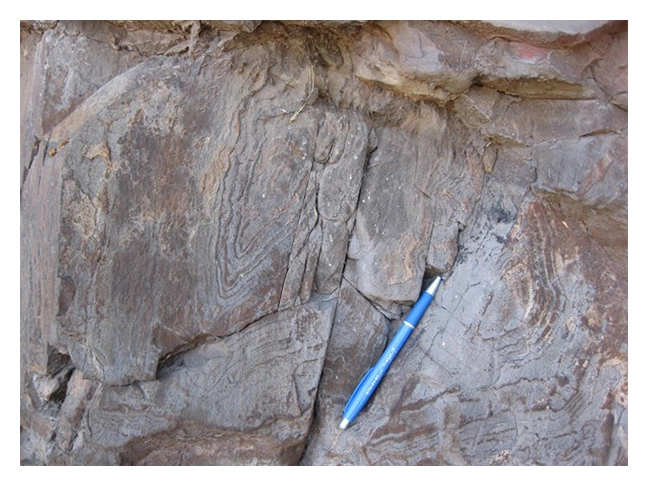
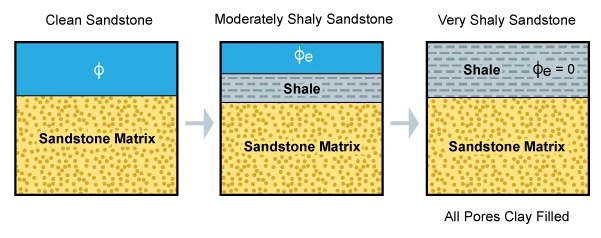
Low contrast pay entails a lack of a resistivity contrast between the pay sandstones and the adjacent shales or water-bearing zones. This situation most commonly occurs when the deep resistivity logging tool encounters a zone that contains fresh formation water of high resistivity. As the salinity of the formation water decreases, the electrical pathway becomes weaker and more dispersed, and thus causes the water to become less conductive. Consequently, while the resistivity of the pay zone may not be low, the resistivity of the water zone is high enough to make it difficult to distinguish between the pay and water-bearing zones.
Causes of Low Resistivity and Low Contrast Pay Zones
Several factors have been found to act on some logging tools to cause problems interpreting low resistivity or low contrast pays. Darling and Sneider (1993) cited the following factors:
- Bed thickness: Some pay zones are too thin to be resolved vertically by some logging tools, especially the older vintage tools.
- Grain size: Very fine grain size can result in high irreducible water saturations.
- Mineralogy: Conductive minerals, such as pyrite, glauconite, hematite and graphite, or rock fragments can have a pronounced effect on the resistivity log response.
- Structural dip (Figure 5): Dipping beds can produce significant excursions on certain deep resistivity logs when the orientation between the tool and the bed deviates from normal.

- Clay distribution: Clay distribution is classified as dispersed, structural, or laminated (Figure 6), all of which can retain significant amounts of bound water.

- Water salinity: High salinity interstitial water causes low resistivity within the pay zone, while low salinity water can cause low contrast pays.
Frequently, a combination of these attributes can cause some resistivity logging tools to read lower deep resistivity than normal in a pay zone.
The most common cause of low resistivity pay is the combination of thin beds containing highly conductive shales with their associated bound water (Figure 7), along with thin pay sandstones which are below the vertical resolution of the logging tool (as illustrated by the slabbed core in Figure 8).
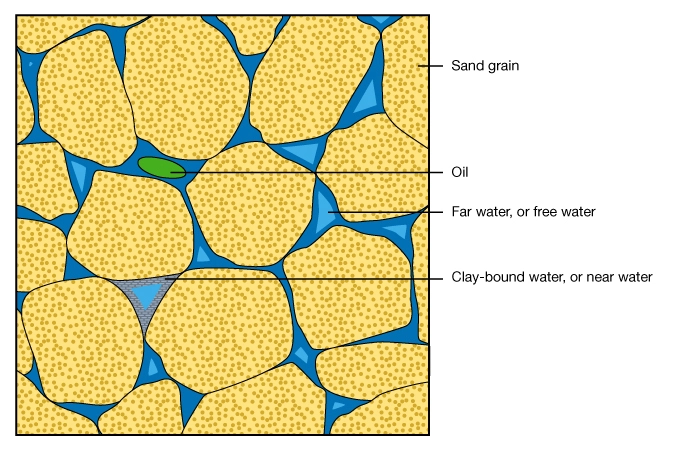
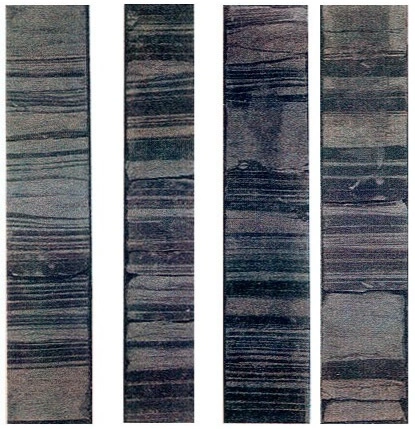
Geographical Locations of Low Resistivity and Low Contrast Pays
Low resistivity and low contrast pays have been logged in wells throughout the world. They have been found in clastic basins ranging from the Gulf of Mexico to Alaska, Offshore Brazil to the North Sea and from West Africa to Indonesia.
An Overall View: Clays, Shales, Sandstones and Shaly Sandstones
Detrital clays are sediments eroded from rocks containing quartz, feldspar, and clay minerals that were transported and later deposited.
- Traveling down mountain streams to rivers, the clays, silts, and muds were deposited on floodplains after waning floods, or in oxbow lakes formed from cut-off river meanders.
- Farther downstream, muds were left behind by ebbing tides along tidal flats that had not been subjected to strong wave action.
- Beyond the shoreline, and below the wave base, the mud settled over much of the deeper parts of the continental shelves, slopes and rises.
- In even deeper water farther from the shore, mud deposited by turbidity currents built up on the abyssal plains.
This slow, steady deposition of fine-grained particles contributes to the extensive blanket of deep water sediments that extend across the ridges, trenches, abyssal hills, and abyssal plains. Shales are the lithified equivalent of these clays and fine-grained muds.
Sands are similarly transported downstream, borne by fast moving currents. Being heavier, sand grains settle out of the stream before the clay fines (Figure 9).

In shaly sandstones, some portion of the otherwise clean sandstone or pore space is replaced by shale and/or clay. In shaly sandstones, we see either:
- A change of flow regimes, which allows the clay to settle out shortly after the sand does, or
- A single, fast flow regime in which sands have been deposited, after which authigenic clays later precipitated out of solution.
A Regional Setting: Deltas and their Deepwater Equivalents
Thin, interbedded layers of sandstones and shales that are below the vertical resolution of the more traditional induction resistivity logging tools are found in a variety of depositional environments. They are common in moderate to low energy fluvial sequences, including upper point bar, levee, and crevasse splay settings (Figure 10).

Laminated shales and thin, flaser bedded sequences of sandstone and shale are typical in subaqueous, prograding and tidal estuarine deltas and shelf sandstones.
Darling and Sneider (1993) note that low resistivity, low contrast reservoirs have been found in all the major siliciclastic depositional environments, with the exceptions of alluvial fans and aeolian deposits. Their study of the Gulf of Mexico found that, chronologically, these reservoirs range from the Middle Miocene to Upper Pleistocene in age. The low resistivity pay sandstones are found in shelf and shelf-slope transition zones (Figure 11) in:
- Low stand basin floor fans
- Deep water levee-channel and overbank deposits
- Transgressive marine sands, especially the highly burrowed intervals
- Lower parts, or toes, of delta fronts deposits and adjacent shingled turbidites, and in the upper part of alluvial and distributary channels

Turbidite Plays
As the search for more hydrocarbons moved to increasingly deeper offshore waters in recent years, several oil companies have targeted some of their exploration wells at the potentially prolific production to be found in turbidite fan and channel sand systems (Figure 12).
Turbidite depositional environment schematic

Upper Fan: The channel deposits at the upper part of a fan lobe, near the canyon mouth, are dominated by massive conglomeratic and very coarse-grained sandstones. Other deposits in the upper fan result from slumping, or debris, flows adjacent to the main channels.
Mid Fan: In the mid fan area, the channels branch into a braided distributary channel patterns as the gradient reduces. Deposits here are not as coarse grained and show graded bedding, with a coarser material at the base and progressively finer sands above.
Lower Fan: Lower fan deposits consist of a series of thin, laterally extensive sandstone beds deposited in broad lobes separated by muds.
These depositional systems vary from massive sandstones to thinly bedded sandstone and shale sequences and are deposited through a large range of depositional energy levels.
It is in the waning stages of these flows that clays settle out among the recently deposited sands, creating interbedded and finely laminated sandstone and clay bodies with the potential for later development into low resistivity pay reservoirs.
Individual beds in a turbidite deposit are recognized by a distinctive series of bed forms known as a Bouma sequence (Figure 13). In the figure, the variation in depositional energy and grain size is seen with a distinctive fining upward sequence.

This alternation of thin sandstones and shales in turbidite sequences normally results in a series of kicks, or spikes, on both the SP and gamma ray logs (Figure 14).

Fanini et al. (2000) describe thin bedded turbidite sandstone sequences that are found in the channel levee and overbank-levee environments, as well as in middle to distal fan complexes.
Turbidite overbank and channel levee sandstones tend to be erratic in both their thickness and areal extent. However, they may be hydraulically connected, both laterally and vertically, due to cross-cutting or cut and fill sequences.
In the middle and outer turbidite fan complex, the laterally extensive sheet sandstones and interbedded shales can be highly productive. When they occur in sufficient thickness, a single development well can drain large hydrocarbon volumes and sustain high production rates because of the hydraulic connectivity with adjacent sandstones in these reservoirs, which are better developed.
 Petro Shine The Place for Oil and Gas Professionals.
Petro Shine The Place for Oil and Gas Professionals.



